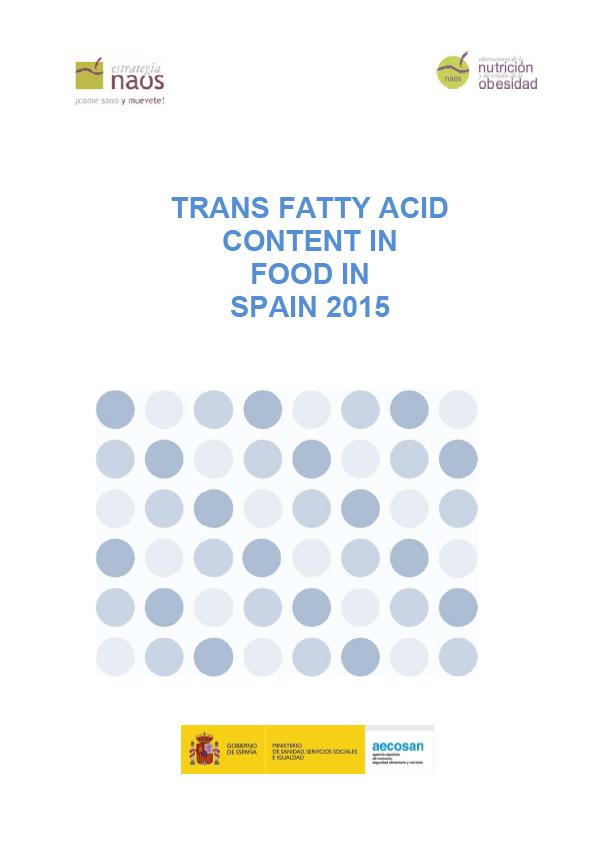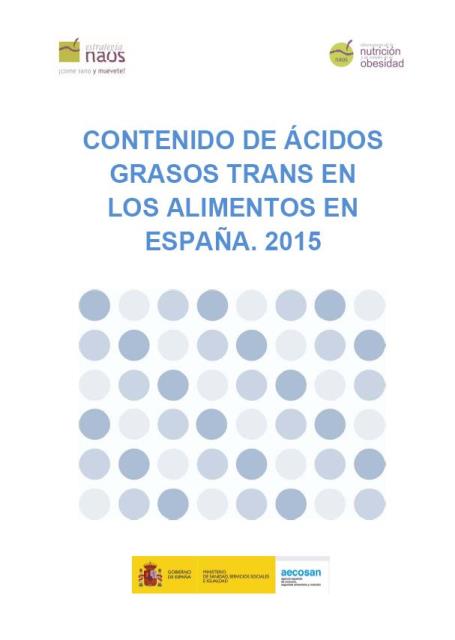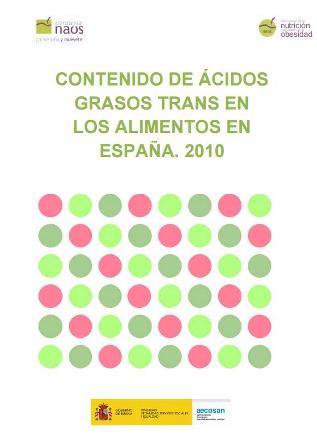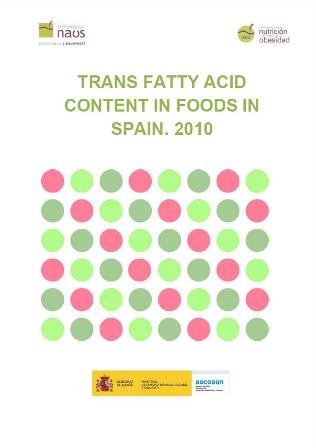Trans fatty acid (or trans fat) reduction
Given the solid scientific evidence that trans fatty acids (TFAs) have no nutritional value and links between consumption of them and cardiovascular diseases, the need was signalled throughout Europe to reduce or even eliminate their presence in foods.
In Spain, AECOSAN is responsible for this work. The NAOS strategy promotes the reduction of TFAs and the food industry itself is taking the initiative in reducing the presence of TFAs in foods and changing the fat profiles of numerous products.
Law 17/2011 on Food Safety and Nutrition establishes in Article 43 that: Operators must establish adequate conditions for industrial processes which can generate “trans” fatty acids to minimise the formation of these when they are destined for use in food, whether individually or as part of the composition of foods. They must demand that providers provide information on the “trans” fatty acid content of the foods or raw materials they offer and must make information available to the authorities regarding the “trans” fatty acid content of their products. These requirements will not apply to products of animal origin that naturally contain “trans" fatty acids.
ASSESSMENT AND MONITORING:
Trans fatty acid content of food in Spain. 2015
A study was carried out in 2015 into the trans fatty acid (TFA) content of foods in Spain. Analysis was run for TFA content, total fat content and TFAs as a percentage of total fat. This was carried out for 277 foods.
The aim of the study was to assess whether any change had occurred in the fatty acid content of foods by comparing the 2015 data with the values from an initial study carried out in 2010.
Study findings:
- The percentage and content of TFAs in the majority of foods analysed was below 2% of total fat.1
- There was a decrease in TFA content compared to 2010 data in some food groups.
- No statistically significant increases in TFA content were found in any of the food groups analysed.
We can therefore consider that in Spain, TFAs do not represent a serious problem from a public health perspective, as the TFA content of foods shows a decreasing trend and levels are expected to continue to decline to the point where they practically disappear.
1Note: WHO recommends that TFA intake from food should be below 1% of daily energy intake. The intake of TFAs above this value is linked to several cardiovascular risk factors that contribute to increased risk of coronary heart disease. A 2% rise in TFAs in daily energy intake increases the risk of cardiovascular disease by 23%.
Artículo en Gaceta Sanitaria:
Trans-fatty acid content of food products in Spain in 2015. Pérez-Farinós N, Dal Re Saavedra MÁ, Villar Villalba C, Robledo de Dios T. Gac Sanit. 2016 Sep-Oct;30(5):379-82.
Trans fatty acid content of food in Spain2010
In 2014, AECOSAN’s NAOS Strategy presented a study analysing the TFA content of 450 products tested in 2010. The findings of the study revealed that the great majority of food groups in Spain had a TFA content (as a percentage of total fats) below 2%, the amount recommended by WHO. Those few groups that exceeded this threshold correspond to foods of animal origin that can naturally contain TFAs, such as dairy products.
We can therefore consider, pending the results of a new assessment carried out in 2015, that in Spain, TFAs do not represent a serious problem from a public health perspective, as the TFA content of foods shows a decreasing trend and levels are expected to continue to decline to the point where they practically disappear.



